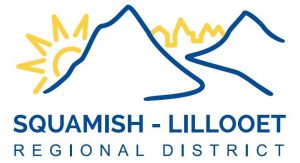Community Emergency Groups
Squamish Municipalities Connect with Residents Through ePACT for Better Preparedness and Emergency Response
 “Using ePACT as a complement to our existing emergency preparedness and resilience initiatives means that we can share important information with our entire community at crucial moments. Our residents feel more secure and better prepared for emergencies knowing ePACT is in place.“
“Using ePACT as a complement to our existing emergency preparedness and resilience initiatives means that we can share important information with our entire community at crucial moments. Our residents feel more secure and better prepared for emergencies knowing ePACT is in place.“
~ Alexis Kraig, Emergency Coordinator, District of Squamish
About Squamish-Lillooet Regional District
Located in Southwestern BC, at the northern tip of a glacially etched fjord on the Pacific Ocean, surrounded by mountains and nestled within a temperate rainforest, the Squamish Lillooet Regional District (SLRD) is comprised of four municipalities, including the District of Squamish. There are 38,000 residents within 25 communities, covering more than 16,000 square (10,000 square miles).
Municipal Challenges
Due to the environmental diversity of the region, Squamish and surrounding communities like Whistler, Pemberton, and Lillooet are at risk for a range of natural disasters including flooding, earthquakes, and summer wildfires. Both the SLRD and the District of Squamish had challenges reaching residents in the event of a crisis, especially those in rural communities across the region.
The Squamish-Lillooet Regional District and the District of Squamish faced the following challenges with their existing emergency and mass notification processes:
- Limited reach: The use of outdated phone trees, word of mouth, and the web meant that it was difficult to get important information out to the right people in a timely manner.
- Lack of important resident data: Beyond standard population information, neither municipality had a way of knowing who would require special assistance in the event of an evacuation or those residents with special skills who might like to volunteer in a crisis.
- Hard to prepare residents: Both municipalities have seen an increase in new residents moving to the region from urban environments – residents with little to no experience in a rural community. Existing systems made it difficult to share important information to help these, and other residents, personally prepare for potential future crises.
- Heavy reliance on first responders: When specific communities were threatened by a crisis, it fell on first responders to alert residents. Only six communities have a dedicated fire department, stretching first responder resources extremely thin in many emergencies. With ePACT, the Squamish-Lillooet Regional District and the District of Squamish could take steps to help residents personally prepare, while providing them with the ability to communicate and share information before, during, and after any crisis.
Connecting and Engaging Entire Communities
Both municipalities hosted special events to formally launch their new alert systems using ePACT, generating awareness among residents, and encouraging participation in the initiative. The SLRD and the District of Squamish made quick use of the online system to get residents to sign up for an ePACT account, include important emergency information, and share with their municipality. By having key resident details available in an emergency, SLRD and the District of Squamish can communicate quickly and effectively when they need to.
Key benefits for SLRD and the District of Squamish include:
- Increased Community Engagement: Residents are encouraged to personally prepare by building their own emergency network through ePACT, adding emergency contacts and key medical information, before connecting with friends, relatives, organizations, and local authorities that can help them in a crisis.
- Ability to Customize Messaging: Residents self-identify through the sign-up process, selecting the community they belong to, and helping emergency management teams customize messaging so that the right information gets to the right people at the right time.
- Managing Vulnerable Populations: In their ePACT account, residents can include specific details about mobility, communication, or physical impairments, so that response teams can easily identify who may require special or additional assistance in a crisis.
- Redundant Communication: ePACT allows emergency management teams, fire departments, and local authorities to send important information out via email, voice, and text message, increasing reach and helping to overcome communication challenges in rural areas where telephone services might be unavailable.
- Resident Security: By personally preparing, residents feel more secure knowing they are better prepared and that their municipality is engaged in resilience and emergency preparedness initiatives.The Squamish-Lillooet Regional District and the District of Squamish have used ePACT to inform residents of a variety of emergency situations since implementation, including flood alerts, road closures, and 9-1-1 outages. The system allows emergency management teams to stay directly in touch with residents, and to amplify messaging in other channels, like community websites and social media.
Improving Community Resilience and Preparedness For All
Both municipalities continue to promote participation in the initiative, for permanent and part-time residents throughout their communities. With 48 out of 52 registered hazards occurring in the Squamish-Lillooet Regional District, the region’s Emergency Management Offices are using ePACT as part of their process for developing evacuation plans and quick response guides for all residents.
 “ePACT allows us to create and send specific messaging directly to emergency-affected communities in the SLRD, sharing important information quickly and easily. We stay directly in touch with enrolled residents, amplifying messaging through our other communication channels, to help people stay safe through timely information.”
“ePACT allows us to create and send specific messaging directly to emergency-affected communities in the SLRD, sharing important information quickly and easily. We stay directly in touch with enrolled residents, amplifying messaging through our other communication channels, to help people stay safe through timely information.”
~ Sarah Morgan, Emergency Management Analyst, Squamish-Lillooet Regional District
Download the PDF version of this use case here.
